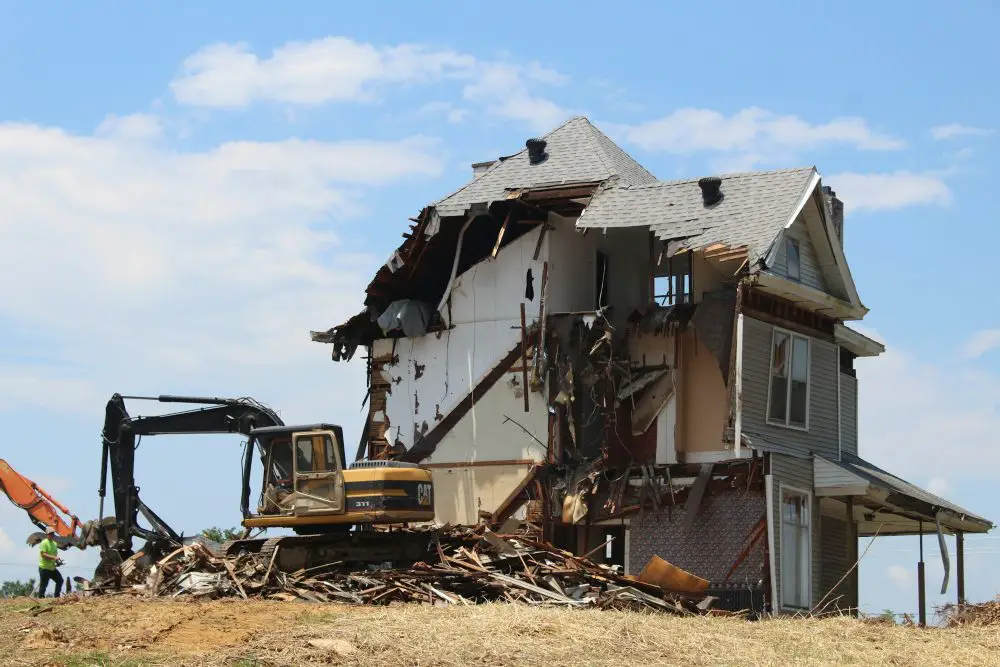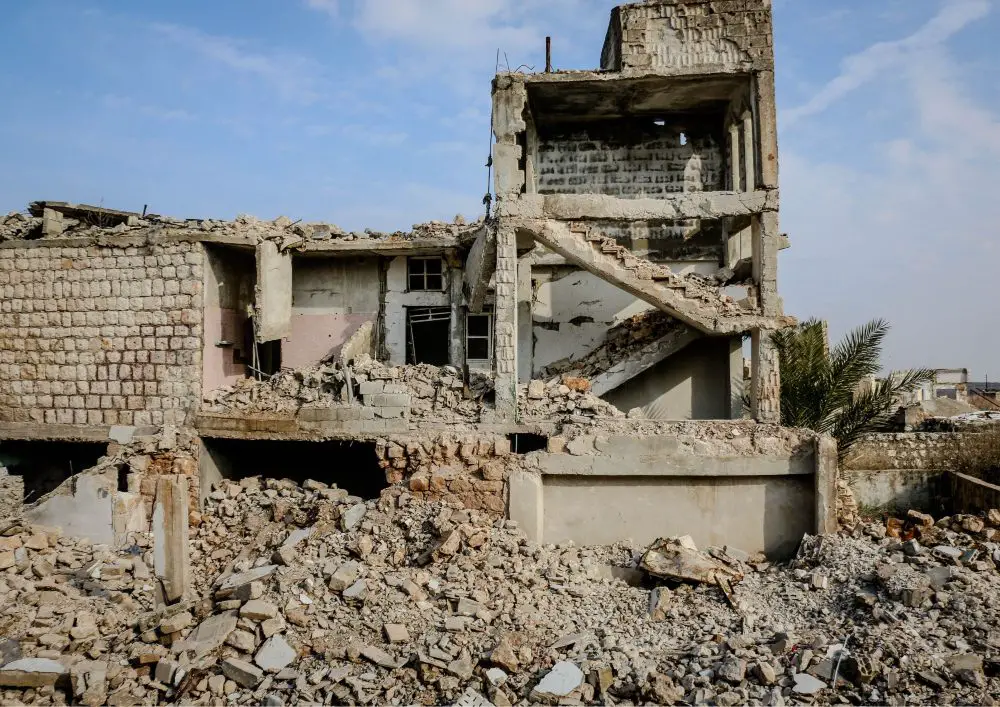Our surroundings are full of abandoned buildings, which are often written off as eyesores or relics from the past. Every old facade might be hiding hundreds of potential risks and dangers not visible to the naked eye. If these hidden dangers are not dealt with in time, they can cause accidents or even environmental disasters.
Contents
Demolition Done Right: How to Clean Up Neglected Structures
Engaging in structure cleaning and demolition is an essential service, pivotal in transforming potential disaster zones into safe, usable spaces. This proactive approach is crucial for the well-being of individuals and the collective security of our communities, underscoring the need for specialized intervention in managing these neglected sites.
Understanding the Risks

Physical Dangers
The physical dangers of neglected structures are manifold and significant. The risk of structural failure is obvious since weak foundations and deteriorating materials can cause abrupt collapses that put anybody inside or nearby in danger. Deteriorating brickwork or weaker beams are examples of unstable materials that raise the possibility of accidents from falling debris.
It is also important to remember that getting stuck in a dangerous building during exploration or salvage operations is a possibility. The aforementioned threats underscore the pressing necessity for a comprehensive examination and evaluation, guaranteeing that the hazards linked to these structures are recognized and immediately resolved to avert mishaps.
Health Hazards
Neglected buildings frequently contain major health risks in addition to physical ones. As mould thrives in damp and poorly ventilated environments, it can cause or worsen existing allergies and lead to many respiratory issues.
Asbestos, which was once a frequently used building material, is now considered extremely dangerous. It may release fibres that lead to cancer and other lung problems. Older houses sometimes include lead paint, which increases the risk of lead poisoning and is especially dangerous for young people.
These toxins require professional detection and removal because they are concealed inside the walls and air of abandoned buildings. The existence of these dangerous elements emphasizes how crucial expert building cleaning and demolition companies are to safeguarding the health of the occupants.
Safe Cleanup Procedures on Neglected Structures
Initial Cleanup
A comprehensive examination is the first step in the initial remediation of a neglected site to identify any imminent threats. It is crucial to secure the location, and this usually entails barricading or fencing to keep out unwanted visitors. This measure shields the general public, as well as the cleanup personnel, from unintentional exposure to risks.
Carefully considered steps are taken to remove any risks that are easily accessible, including waste products, sharp objects, and loose trash. The goal of this stage is to stabilize the environment so that further cleanup procedures and a closer look may take place. Effective site management must prioritize safety and risk reduction from the start.
Decontamination
Decontamination, which comes after the first cleanup, concentrates on getting rid of dangerous contaminants found during the evaluation. Specialist tools and knowledge are needed for this phase as mould, asbestos, lead paint, and other hazardous materials are removed by experts.
Experts remove these risks securely, avoiding their discharge into the environment, by following stringent safety procedures and using protective equipment and specialized techniques. The complexity of decontamination underscores the necessity of engaging with professionals who possess the knowledge and tools to effectively neutralize these risks, ensuring the site is not only cleaned but also safe for future use.
Demolition: The Last Resort

When a structure presents unmanageable threats or its rehabilitation is not feasible both financially and practically, demolition is usually the last option. The state of the building, any potential risks, and the effect on the neighbourhood are all carefully taken into account before deciding to demolish.
To assure safety, the demolition operation is executed precisely and makes use of controlled demolition techniques. These methods might include mechanical demolition with excavators or the strategic use of explosives in implosion for larger structures, always prioritizing the minimization of dust and debris spread to nearby areas.
Throughout the demolition, continuous monitoring is essential to prevent harm to nearby structures and individuals. This phase epitomizes the blend of expertise, planning, and technology in removing dangers and paving the way for new developments, executed with the utmost regard for community safety and environmental standards.
Rebuilding and Renewal
After the completion of demolition, the cleared land represents a blank canvas, ripe with possibilities for renewal and development. This stage is an opportunity to reimagine the space, ensuring that new constructions adhere to modern safety and environmental standards.
It’s a moment for communities to envision future projects that can better the quality of life, whether through green spaces, residential areas, or commercial enterprises. The transformation from a neglected site to a zone of potential underscores the positive impact of structure cleaning and demolition, laying the foundation for safe, sustainable development that benefits the entire community.
Legal and Ethical Considerations
It is essential to navigate the complex web of legal and ethical issues before cleaning up or demolishing neglected buildings. This entails making sure that all local and federal laws, which specify the steps involved in this kind of labour, are strictly followed.
Obtaining the required licenses is an essential procedure that guarantees all activities are both legally permitted and environmentally sound. It is not only a bureaucratic step. Zoning laws, environmental protection statutes, and, in certain situations, historical preservation requirements are all part of the complex legal structure.
These laws are intended to protect the public interest by making sure that any decisions made have no negative effects on the environment or the community.
Ethical considerations are just as important. They demand a careful approach, particularly when working with buildings that can be historically significant or when the project will affect neighbourhoods that are economically challenged.
To ensure that the community’s cultural legacy is preserved, we must pay attention when deciding whether to reconstruct or demolish. Interacting with community stakeholders is not only helpful but also morally required. Project initiators may address concerns, lessen dissatisfaction, and create a sense of collective ownership and community partnership through open discussions and meetings.
In addition to facilitating progress, this inclusive strategy promotes the values of transparency and moral accountability.
The ethical framework encompasses how displaced people or companies are treated. Providing sufficient support—either in the form of financial aid or relocation assistance—demonstrates a dedication to moral behaviour and enhances the project’s beneficial effects on the neighbourhood.
Innovative Reuse and Sustainable Development
After a cleanup or demolition job is finished, there’s a chance for innovative reuse and sustainable development. This pivotal moment presents an opportunity to rethink these areas’ potential and turn them into dynamic hubs that satisfy the community’s changing demands while supporting global sustainability objectives.
For example, turning abandoned industrial lands into mixed-use communities can help with the housing crisis, boost the local economy, and revitalize abandoned neighbourhoods. Similar to this, repurposing cleared land to create urban green spaces can benefit the community’s aesthetics and environmental quality while also giving people much-needed recreational space.
In this regard, sustainable development includes social and economic aspects in addition to environmental ones. New construction can save energy costs and carbon footprints by integrating renewable energy sources like wind turbines and solar panels. By putting green building principles into reality, such as using eco-friendly materials and energy-efficient designs, new construction is further guaranteed to be both environmentally friendly and safe.
In Conclusion
The journey from identifying the hidden dangers of neglected structures to their safe cleanup and eventual demolition underscores a crucial commitment to community safety and well-being. By advocating for proactive measures and the involvement of professional services, we ensure that these efforts contribute to the revitalization and health of our communities, safeguarding our shared future.




